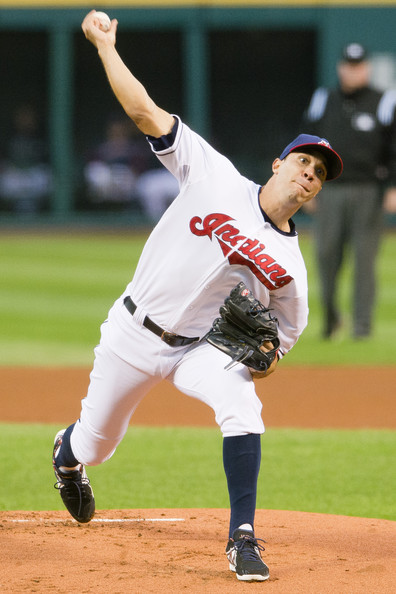 I previously wrote about how Corey Kluber has been a big key to the Cleveland Indians’ turnaround 2013 season. Similarly important has been the second-half performance of Ubaldo Jimenez.
I previously wrote about how Corey Kluber has been a big key to the Cleveland Indians’ turnaround 2013 season. Similarly important has been the second-half performance of Ubaldo Jimenez.
The Indians hurler has the lowest second-half ERA in the AL.
The big righthander was acquired from the Colorado Rockies in 2011 in a deadline deal in which the Indians gave up prospect Drew Pomeranz and several less-touted names.
However, Jimenez’s 2012 season and the first half of 2013 suggested that his days as a successful pitcher were over. In 2012, Jimenez posted a 5.40 ERA, the third worst figure in the major leagues.
Unlike 2011, his peripherals were even worse than his already bloated ERA indicated. Jimenez had strikeout and walk rates of 17.8%, and 11.8%, respectively, both the worst marks of his career. Additionally, his groundball rate plummeted almost nine percentage points.
He followed that up with a poor first half of 2013. His ERA sat at 4.56, and only Jason Marquis (I’m shocked that didn’t work out for the Padres) had a higher walk rate than his 12.2%.
While the strikeout and groundball rates more closely resembled those of his prime years, problems with the longball gave him a 4.50 FIP.
Combine that with an average fastball velocity that had fallen more than 4 mph in the last three years, and Jimenez looked like a #5 starter.
The second-half of 2013 has been a different story. Only Clayton Kershaw has a lower ERA than his 1.82, and only Yu Darvish has a higher strikeout rate than his 29.1%. His walk rate has tumbled to 7.9%. All told, only Anibal Sanchez can match the 3.0 fWAR Jimenez has accumulated in the second half.
So how much of Jimenez’ improvement can be expected to last into 2014 and beyond?
The improvement in strikeout rate is backed by increasing reliance on the slider. Jimenez is throwing it more than ever in 2013, and it has resulted in plenty of whiffs.
His changeup and split-finger are also seeing more action, with positive results. With the reliance on secondary pitches, Jimenez is throwing his fastball just 54% of the time. This approach has paid off, and his swinging strike rate of 8.8% (9.9% in the second half) is nearly the same as it was in 2010.
A major factor in the 1.82 ERA second-half ERA has been a huge drop in HR/FB ratio. His first half rate of 13.1% plummeted to an obscenely low 3.8%, a figure that is bound to regress, along with the 81% strand rate that is nearly ten points higher than his career average.
The groundball rate is actually down slightly from the first half to the second half. Despite the huge drop in walk rate, Jimenez threw the same percentage of pitches in the strike zone in the second half as he did in the first. While the fastball velocity has been a shade higher in the second half of 2013 than the first half, it has still declined from 2012.
While Jimenez can’t be expected to continue to pitch to a 1.82 ERA, and his second-half strikeout and walk rates will probably regress, the data and the eye test indicate that he has made significant adjustments for the better.
He won’t regain the electric velocity that he possessed in his younger days, but he is doing what all pitchers must learn to do to be successful in their later years. That is, to rely less on the fastball and gain better control and command of offspeed pitches. These changes should allow him to be a successful #2/#3 for the next few years.
